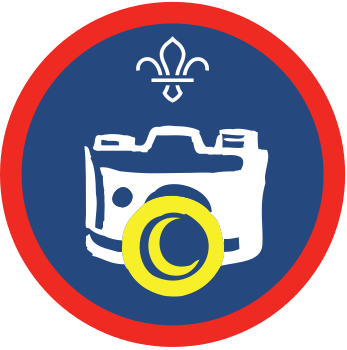
Philosophical Photography
You’ll need
- Pens or pencils
- Scrap paper
- Photos of the group
Before you begin
- Use the safety checklist to help you plan and risk assess your activity. Additional help to carry out your risk assessment. Don’t forget to make sure all young people and adults involved in the activity know how to take part safely.
- Make sure you’ll have enough adult helpers. You may need some parents and carers to help if you’re short on helpers.
Set the scene
- Gather everyone together in a circle.
- Explain to your group that you’ll be exploring photography and how it impacts our lives.
- Ask someone to choose a short game to play, such as Splat, Wink Murder or Stuck In The Mud.
- During the game, ask a few of your adult volunteers to pretend to take photos of the young people.
- Once the game has finished, ask everyone the following questions:
- How did it feel being photographed during this game?
- Did it change how you played the game? Did it make it feel more serious, or was it harder to concentrate?
- How would you feel if these photos were going to be printed in the local paper tomorrow?
- Why is it different when it is a surveillance camera recording us rather than someone with their phone? Should you always be told if there is surveillance?
- Does photography mean that everyone has the possibility to always be watched?
- Would your life be better if photography never existed?
- Who owns your likeness once the photograph is taken? Is it the photographer, or you? Should someone be able to reproduce a photo of you without consent?
Is a picture worth a thousand words?
- Ask everyone to get into small groups.
- Give each group a photo prompt from the list below and remind them to keep this a secret until after they have shared their final photograph. Some photo prompt ideas could be people dancing at a party, finding someone who was lost, fans watching a football match, a group having a nap and taking part in a sports day.
- Each group must take a photo that acts out the prompt given to them.
- After 10 minutes, bring everyone back together and ask each group in turn to share their image with the other groups.
- Everyone must try to guess what the other group's photo prompt was.
- Either in small groups, or as a whole group, discuss the following questions:
- How did it feel to stage your image? Was this very different from how you might take photos with your friends?
- Is asking people to ‘smile’ for a photo the same as completely staging it?
- Does facial expression or body position change how much you believe the story in the photograph?
- How do you decide whether a photograph is truthful or not?
- When can a photograph be considered ‘fake’?
- When does a photograph need context to understand what is happening?
- Is a photograph a piece of art, or a story?
Create your own story
- Before the session, print out photographs for the groups to use. This could be from your last group event, such as a camp, an expedition, a fundraising event and so on.
- Distribute the photographs between the different groups and instruct them to create a story with the photos. This can be done by arranging them in different ways and adding captions.
- In their small groups, discuss the following questions:
- Is it easy to change the meaning of an image?
- What information is needed when considering the context of a photograph?
- Do these images still tell a story about the people in them, or has the meaning changed?
- What value do photographs hold when we can take images anywhere, anytime?
- When should photography be used to document facts?
- When would it be your duty to take a photograph?
Reflection
In this activity we learned about expressing our own opinions and respecting opinions of others.
How did it feel to be photographed? Did it feel strange to have the activities you were doing observed in this way. How did it feel to look back at these photos? Did everyone feel the same?
We then looked at the stories pictures tell. Next time you see a picture will you take it at face value or look for a deeper meaning? How do people use photography to trick or mislead others?
Safety
All activities must be safely managed. You must complete a thorough risk assessment and take appropriate steps to reduce risk. Use the safety checklist to help you plan and risk assess your activity. Always get approval for the activity, and have suitable supervision and an InTouch process.
- Active games
The game area should be free of hazards. Explain the rules of the game clearly and have a clear way to communicate that the game must stop when needed. Take a look at our guidance on running active games safely.
- Phones and cameras
Make sure parents and carers are aware and have given consent for photography.
Make sure that you are picking topics and questions that are appropriate for the young people’s age range.
Communication does not always need to be verbal, the same way it does not always need to involve movement. Pick a style that works for the needs of your group. Additionally, allow space for people to write down their ideas or communicate their ideas for someone to share on their behalf. Everyone’s viewpoint deserve space to be understood.
All Scout activities should be inclusive and accessible.



